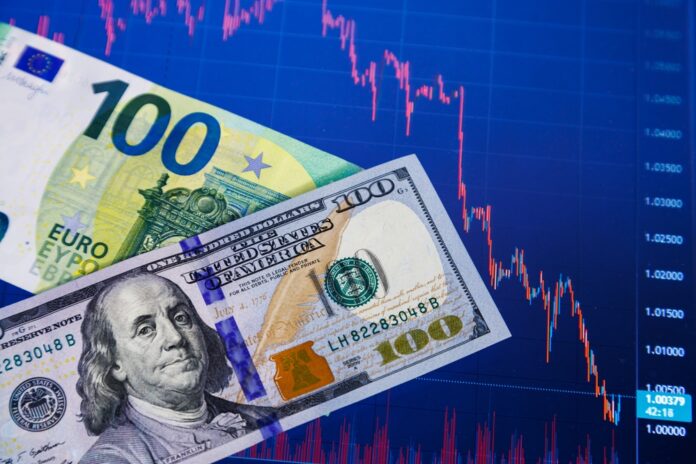The US dollar fell on Wednesday, trading defensively following the Trump administration’s agreement with its neighbors, Canada and Mexico, to delay tariffs. Meanwhile, the euro gained despite weak regional services activity data.
The dollar index, which analyzes the evolution of this currency in comparison to a basket of six other major currencies, was trading down about 0.4% to 107.405, retreating from the three-week high recorded earlier in the week.
Dollar on the Defensive
Volatility in currency markets has eased somewhat after a turbulent start to the week following Trump’s imposition of high tariffs on the United States’ main trading partners. However, tariffs on Canada and Mexico have been delayed after negotiations.
Trump has not backed down on imposing tariffs on China, and Beijing has responded by imposing tariffs on US imports such as agricultural equipment, energy shipments, and automobiles.
“The focus is now on China, and a relatively measured response from Beijing to Trump’s tariffs keeps markets optimistic that some agreement can be reached before China’s retaliatory tariffs take effect on January 10,” ING analysts said in a note.
Traders are also monitoring President Trump’s unexpected proposal for the United States to take control of the war-torn Gaza Strip and develop it economically, given the geopolitical complexities of the Middle East.
“Markets are treating Trump’s announced intention to take over the Gaza Strip and evacuate Palestinians to neighboring countries with skepticism,” ING added.
“If we see signs that the US is planning to deploy troops in the Middle East, the market implications could include risk aversion, a positive impact on oil prices, and a stronger dollar, as Arab nations would likely strongly oppose the move.”
Euro Rises Despite Disappointing PMI Data
In Europe, EUR/USD traded 0.3% higher at 1.0411, despite weak January services activity data in the eurozone.
The HCON services PMI for the eurozone fell to 51.3 in January, down from 51.6 in December, while the composite index remained marginally in growth territory.
“We stand by our prediction that EUR/USD will begin to lose support once it crosses 1.040, as the euro remains unattractive from a macro-fundamental perspective and Trump has indicated that the EU should be next on the tariff list,” ING added.
GBP/USD traded 0.4% higher at 1.2523 ahead of the Bank of England’s policy meeting scheduled for Thursday.
The UK central bank is expected to cut interest rates next week from 4.75% to 4.5% when it updates its economic growth and inflation estimates.
Since the Bank of England last published its forecasts in November, the economy appears to have stagnated, and key inflation measures tracked by policymakers declined in the previous month.
Strong Fluctuations in the Onshore Yuan
USD/CNY rose 1.2% in Asia to 7.2710, with the onshore yuan experiencing sharp fluctuations on Wednesday as China returned from a holiday break.
The primary concern remains Trump’s trade tariffs, which took effect on Tuesday. In response, China imposed tariffs on certain US commodity imports, applied export controls on rare earths, and launched an antitrust investigation into Google (NASDAQ:GOOGL).
USD/JPY traded 0.8% lower at 153.12, its lowest level since mid-December.
The yen was primarily boosted by stronger-than-expected data on average cash earnings and benefits, reflecting sustained growth in December. The reading was also supported by year-end bonuses.
This data reinforced expectations that the Bank of Japan will have sufficient momentum to continue raising interest rates after increasing them by 25 basis points the previous week.



